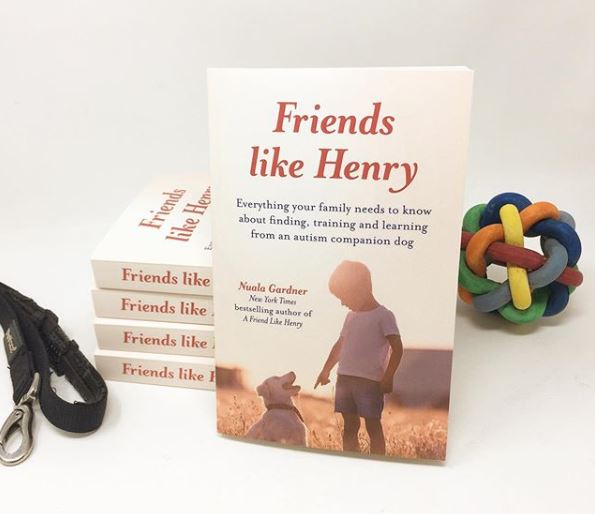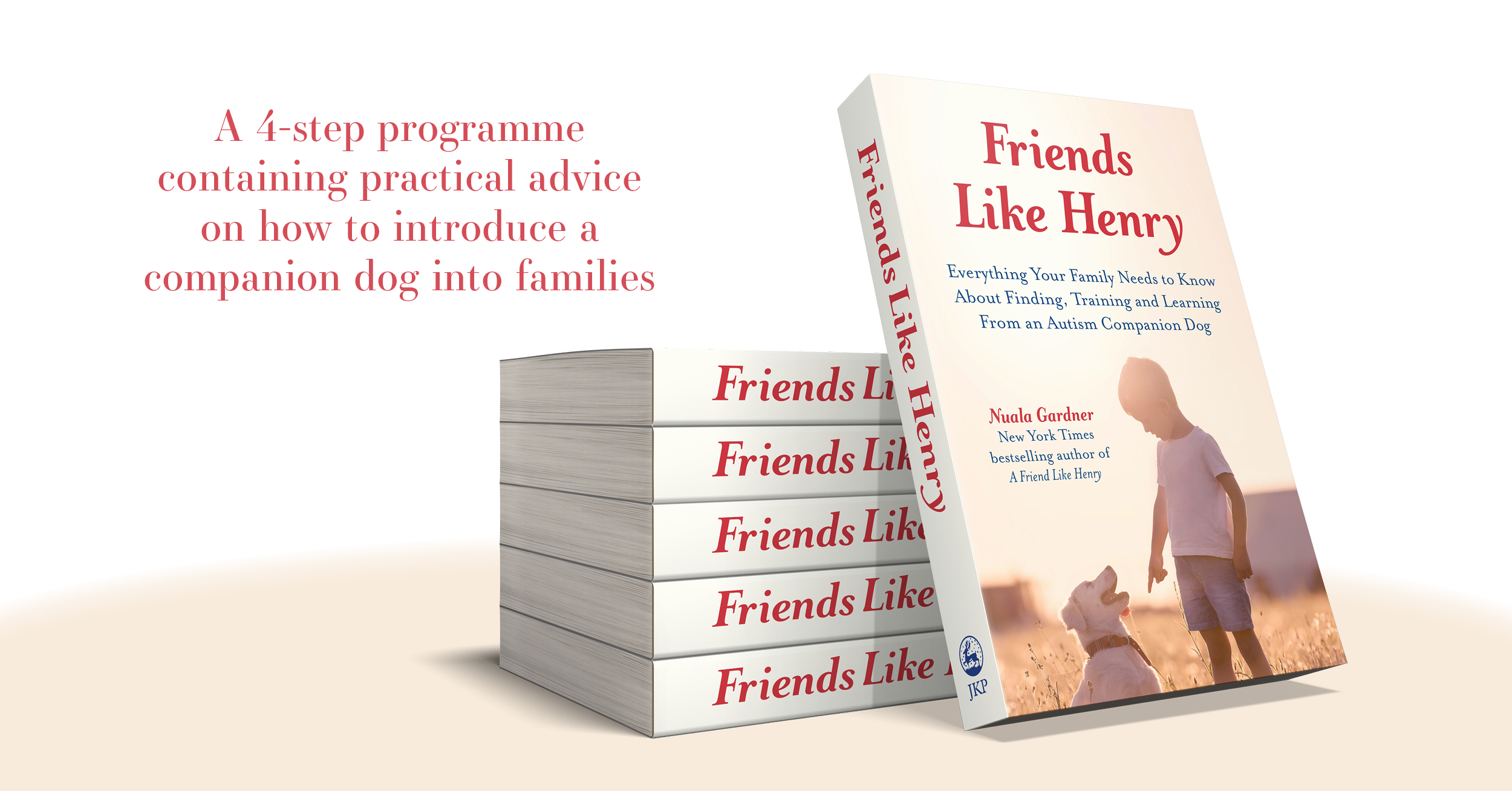Nuala Gardner is the mother of Dale and Amy, who are both on the autism spectrum. Now an expert on autism dogs, Nuala’s career has led her to share the remarkable, thought provoking story of her children’s autism and their family’s autism dogs. Her books have given hope to hundreds of thousands of families affected by autism all over the world.
Nuala says of this new book, Friends Like Henry, “May this manual be the catalyst to create more canine successes and many new wonderful friendships between mankind and dogs.”
Since the publication of A Friend Like Henry, I’ve been contacted by parents, professionals and working dog organisations, both within the UK and internationally, wanting advice on how to use dogs to improve the lives of those with a disability. Parents wanted to source the right puppy or mature dog for their child; others wanted to know which programme or assistance dog charity would best suit their child’s needs. Some wanted guidance because they had two children affected and nothing was available for families with two children with disabilities. Some professionals from the working dog world wanted my help to further develop their autism dogs programme. Dog trainers and breeders also wanted my advice on how they could enhance the role of the dog for the client or improve their practice.
I was like these parents before I found Henry. I was desperate to reach Dale and would have paid literally any price to find a suitable dog for Dale. But I knew I had to do my homework, to get it right; the consequences for Dale and the dog’s future well-being were not lost on me.
However, 23 years ago, I was fortunate because Dale accessed the right education for his autism and his teachers’ practice was exceptional. I learned so much from them and, as time passed, they taught me how to work with Dale’s individual autism to achieve the best chance of success in allowing him to progress and reach his full potential.
I also had the advantage as a child of being brought up with mongrel dogs. In those days, owning a pedigree was rare and very much a luxury. I was fortunate to gain my dad’s knowledge of how to treat a dog and to core train it to be obedient and socially well behaved.
I have many aspirations in writing this manual; the most important is to share my personal experience and many years of accumulated dog knowledge with others, especially the parents of children and adults who have a disability. My ultimate goals include:
- preventing financial exploitation of parents
- preventing unnecessary harm to the child due to dog bites
- reducing the number of puppies being returned to breeders.
Most important of all, I want to prevent the risk of dog stress, bearing in mind the working role the dog has and its wonderful gift of independence to the child. For me, dog welfare is at the forefront of this programme!
Having been involved in disability and the working dog world for the past nine years, one issue alone has become apparent. Within the autism and other disability assistance dog worlds, the demand for autism dogs will always supersede the supply. While there are now numerous breeders, organisations and charities endeavouring to help families, sadly there have also been those who have misled and exploited vulnerable families.
There is also the problem that too many puppies are being bred in the wrong environments, such as horrific puppy farms or rural settings that have no plans or facilities for socialising puppies to adapt them to a domestic household. I will cover this important subject in detail later, as sourcing the right dog or puppy is absolutely critical to success.
Aside from sourcing a dog that is suitable for a child’s individual disability, addressing the transitional care required for the child and dog is essential. Good autism and disability practice should be universal, no matter what the intervention is. The key components on how to teach a child with a disability should be the same throughout all organisations. The reality, though, is that it is not! That is why it is vital to research what is available and which dog programme will suit the child’s individual needs. Choices about the age and breed of the dog and where to ethically source the right dog for the child are critical for success.
In fact, careful planning beforehand for any family seeking a dog is the best way to create success; this programme will give you the guidance needed to plan ahead.
 Another vital purpose this manual should serve is to allow some parents to decide that a dog is not the right intervention for their child or family circumstances. That outcome alone will save much time emotionally as well as saving parents financial cost, reassuring them that they made the right decision for their child and a dog’s future welfare.
Another vital purpose this manual should serve is to allow some parents to decide that a dog is not the right intervention for their child or family circumstances. That outcome alone will save much time emotionally as well as saving parents financial cost, reassuring them that they made the right decision for their child and a dog’s future welfare.
I have witnessed lots of success in some programmes; sadly, I have seen the other side as well. Breeders with the right intentions, but little to no knowledge of autism, can compromise the best outcome and cause more upset to families. While I have endeavoured to provide as much knowledge as possible on this massive subject, this manual by no means fully covers this very specialised field. It will, though, give the reader the knowledge, tools and best practice needed to help achieve the best chance of success.
If you would like to read more articles like this and get the latest news and offers on our books about autism, why not join our mailing list? We can send information by email or post as you prefer. You may also be interested in liking our Autism, Asperger’s and related conditions Facebook page.

